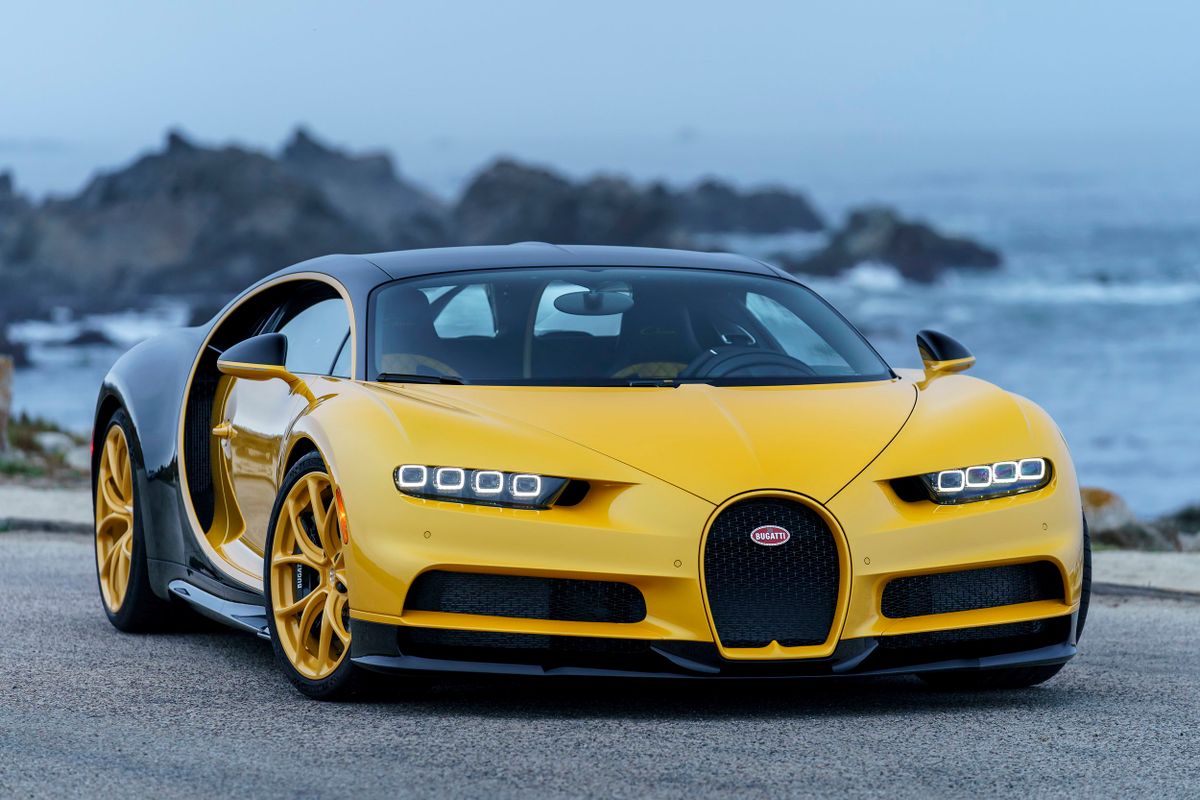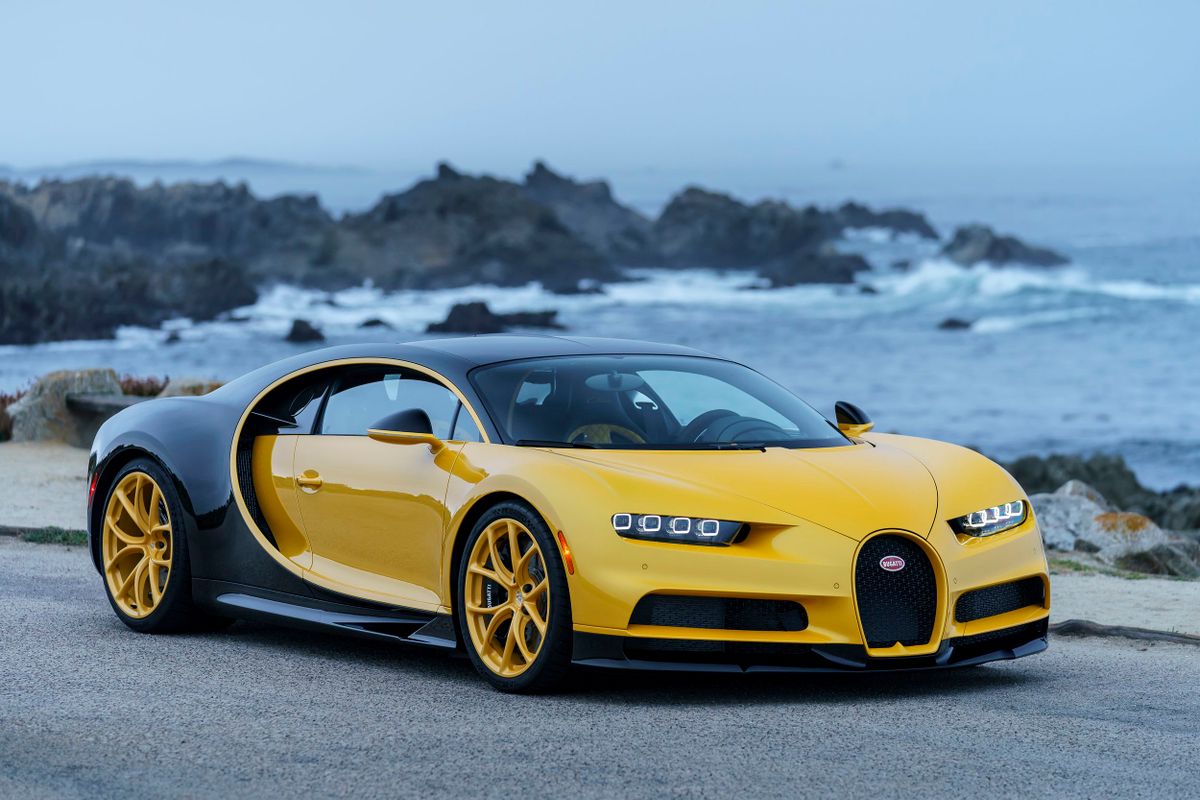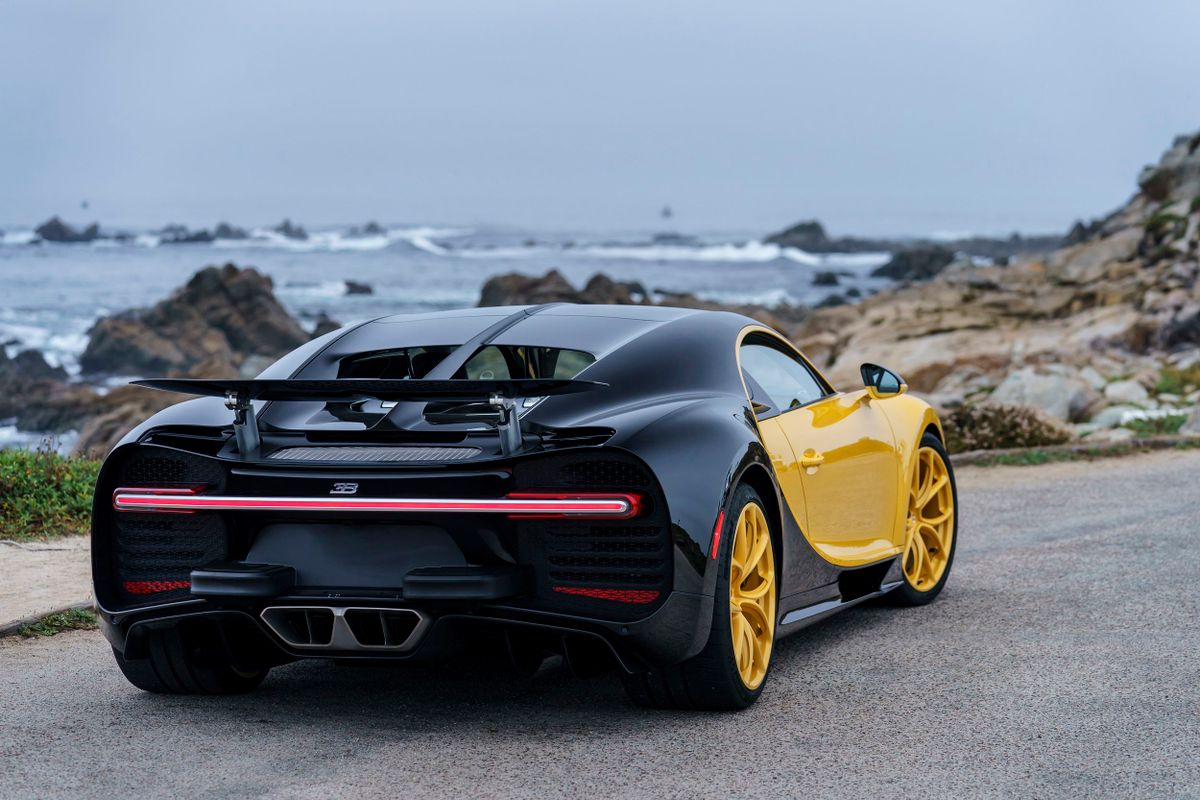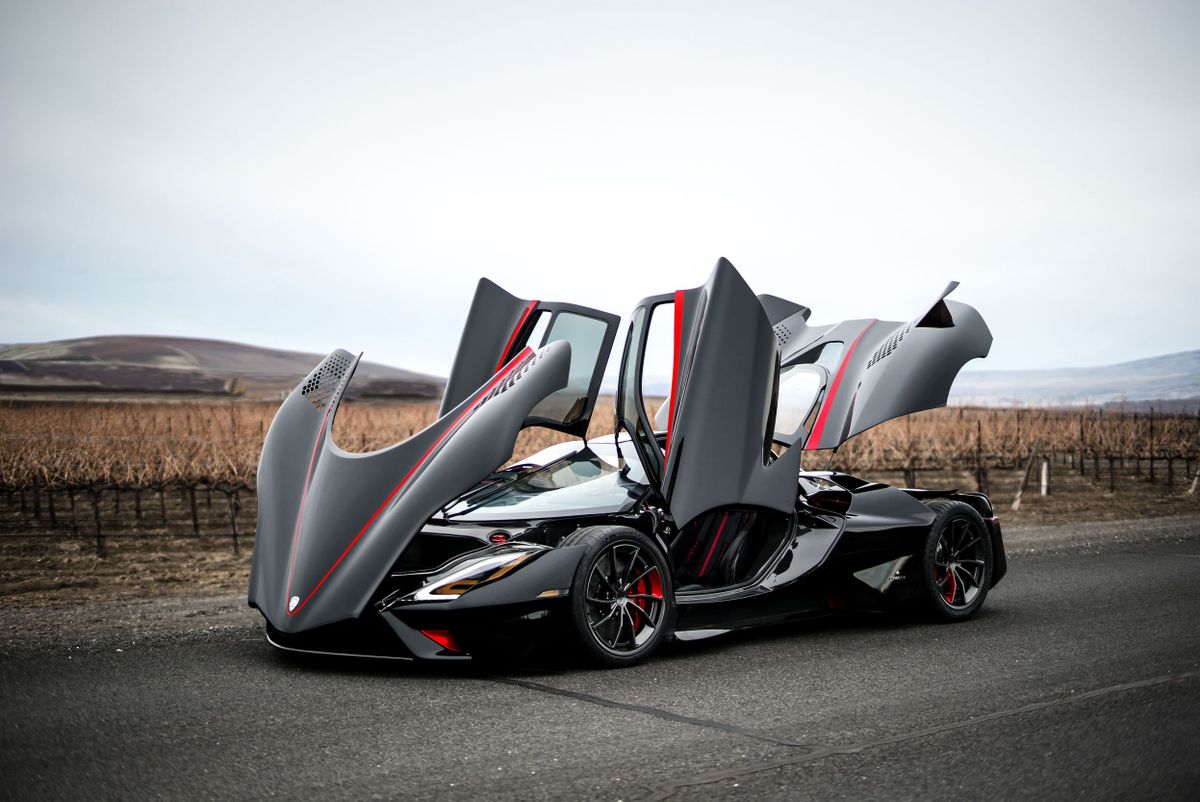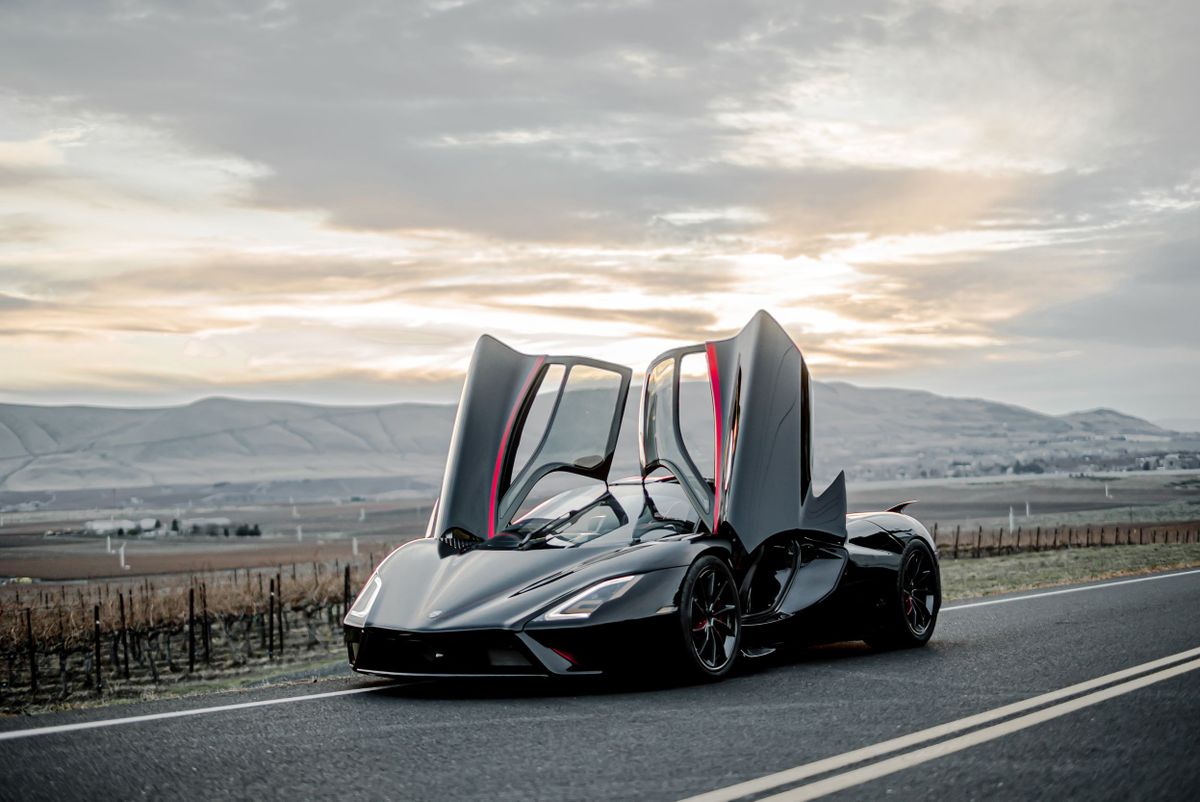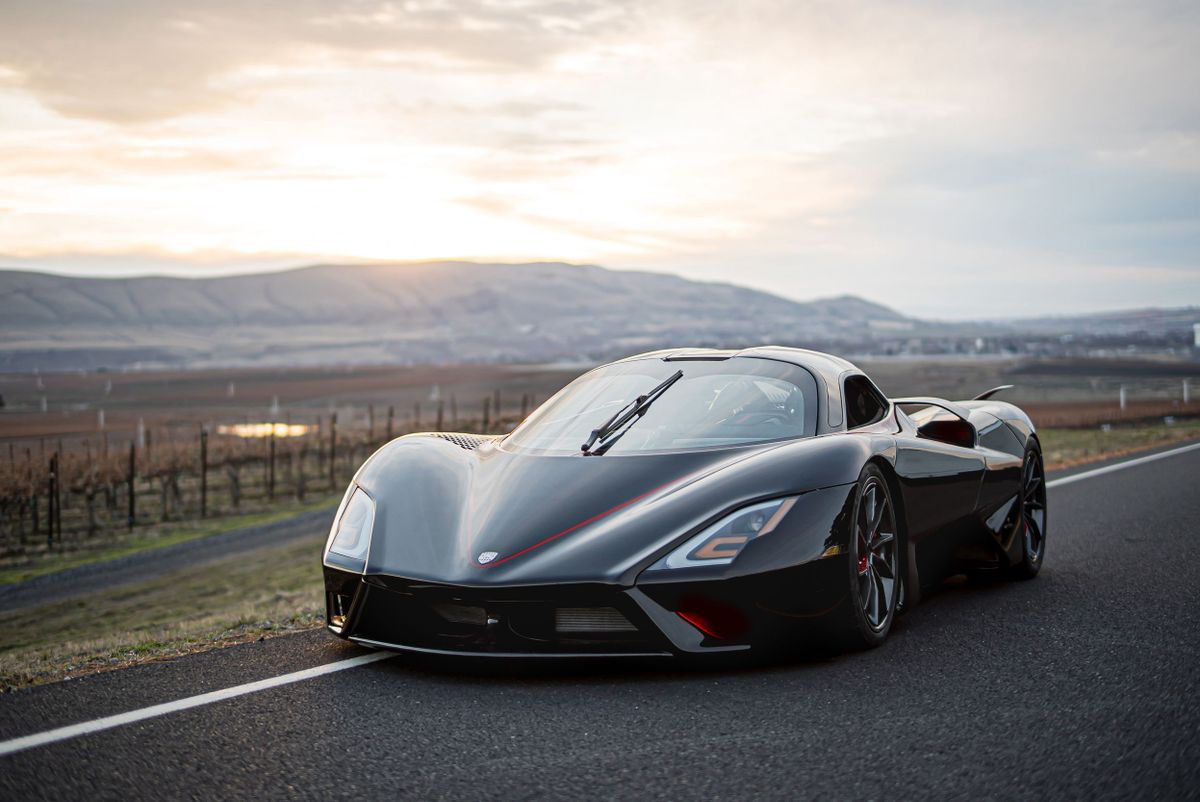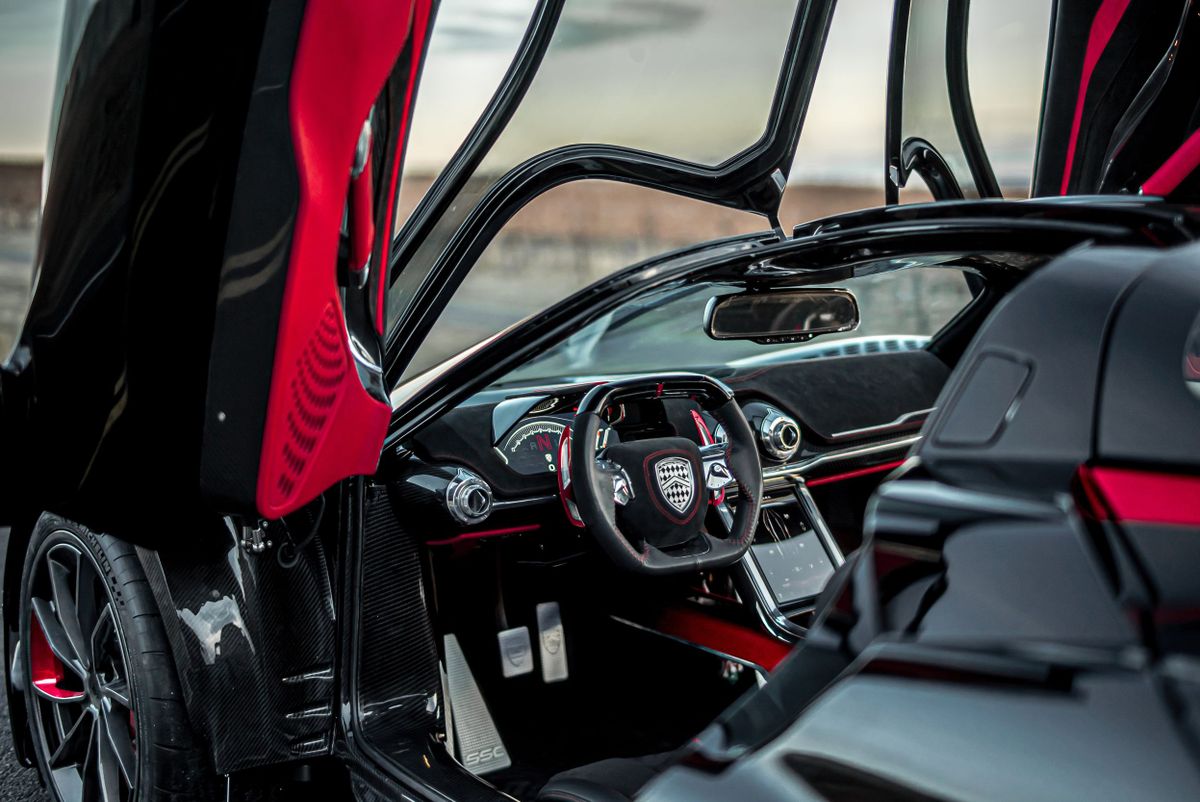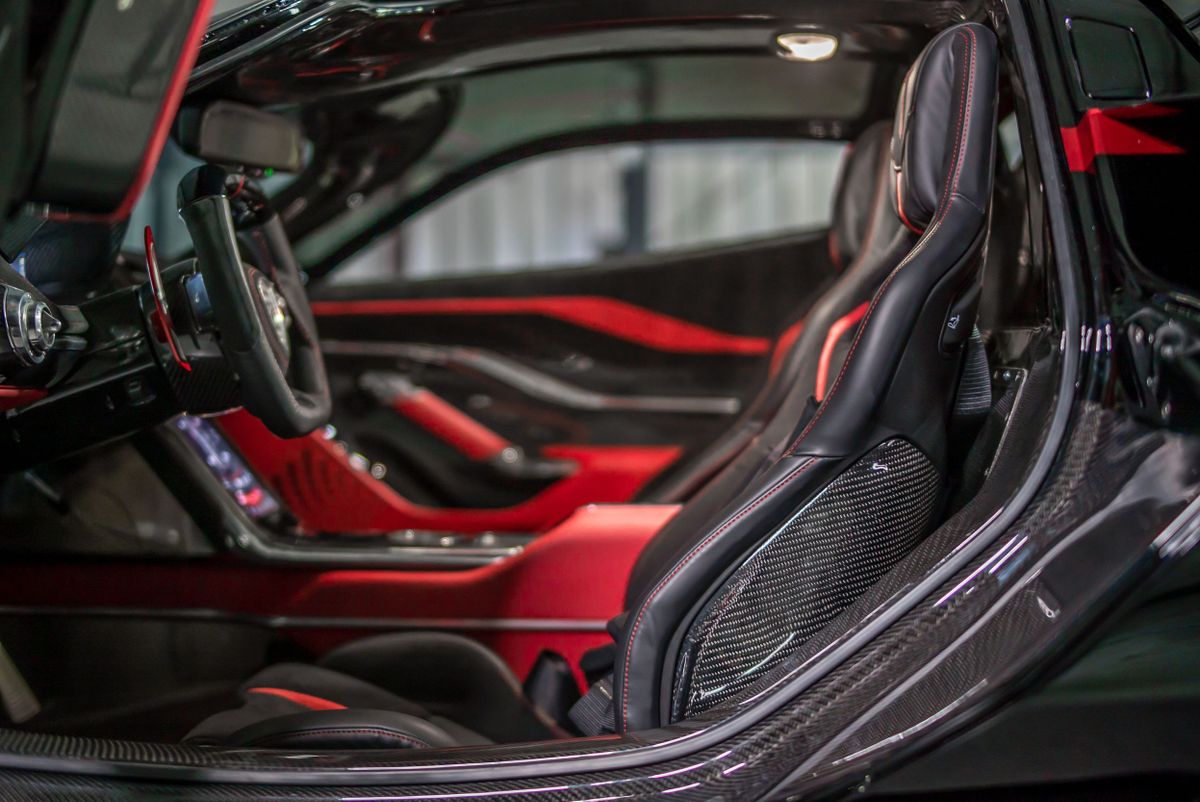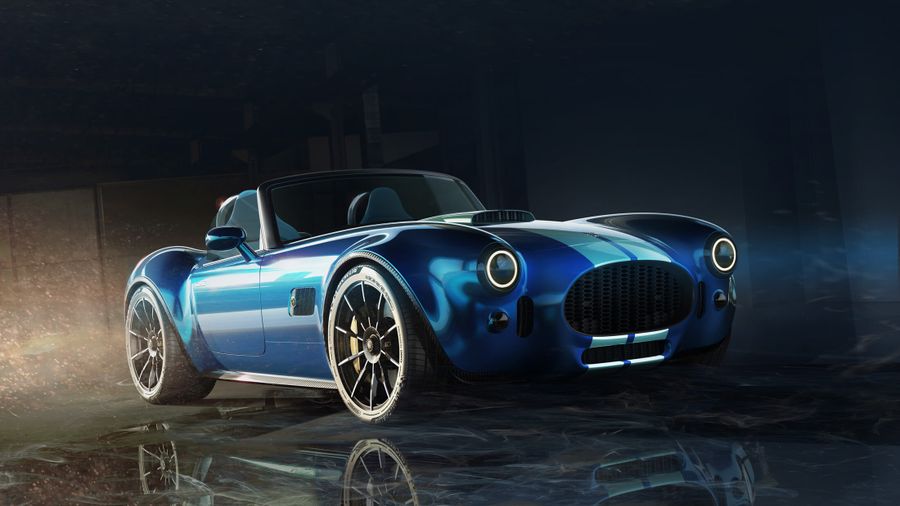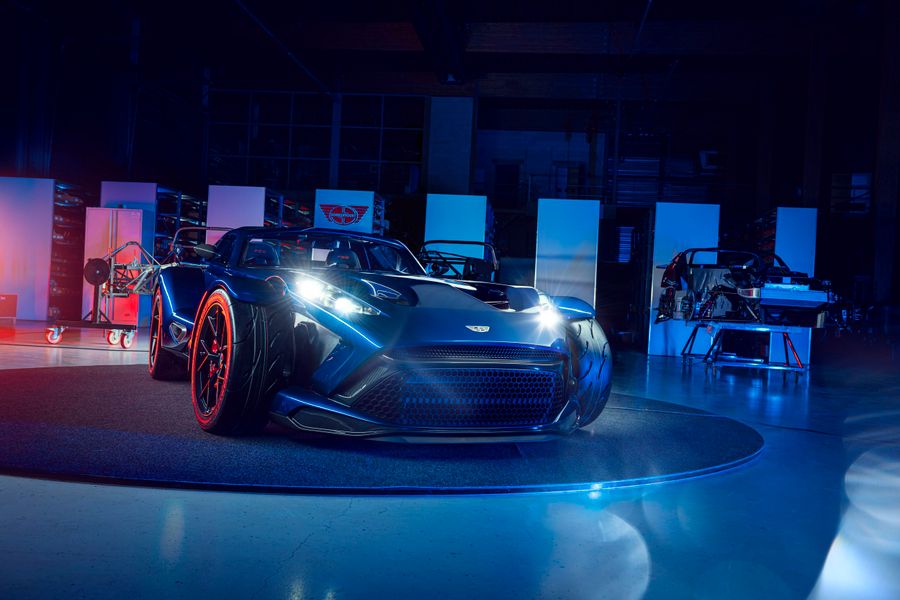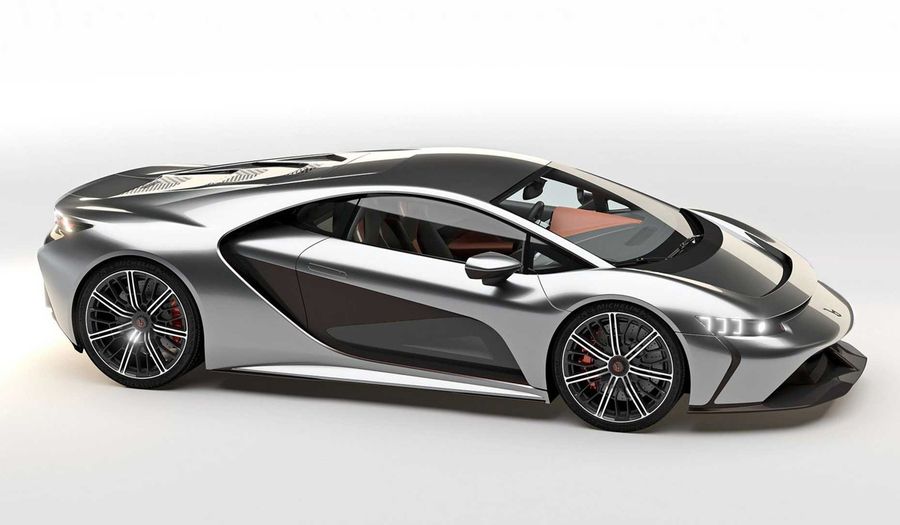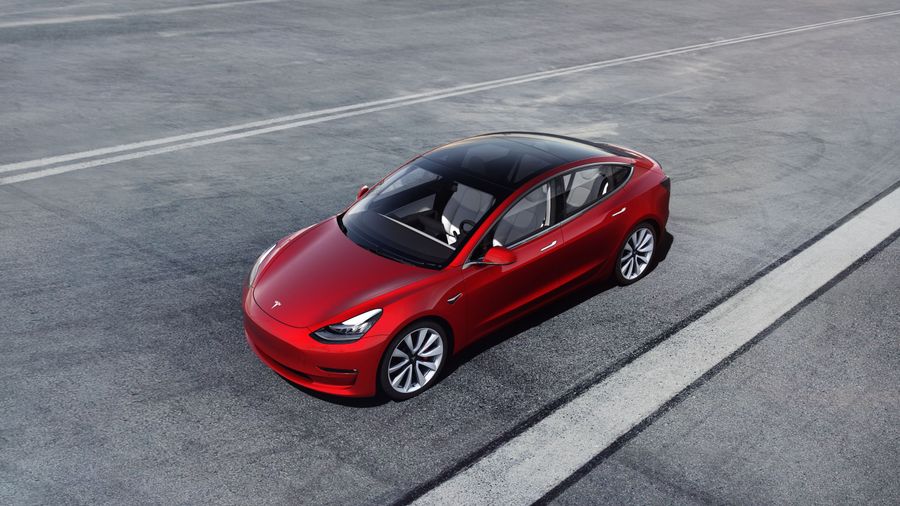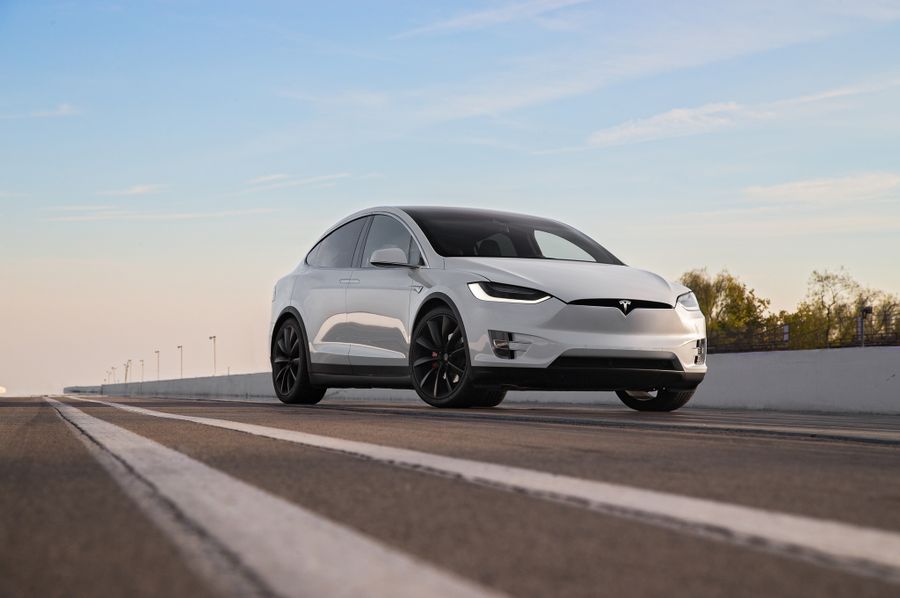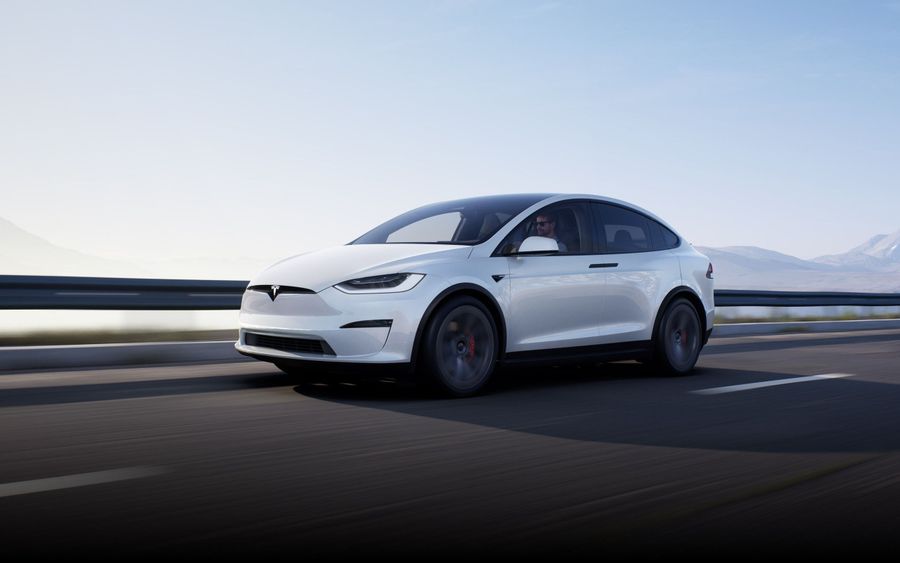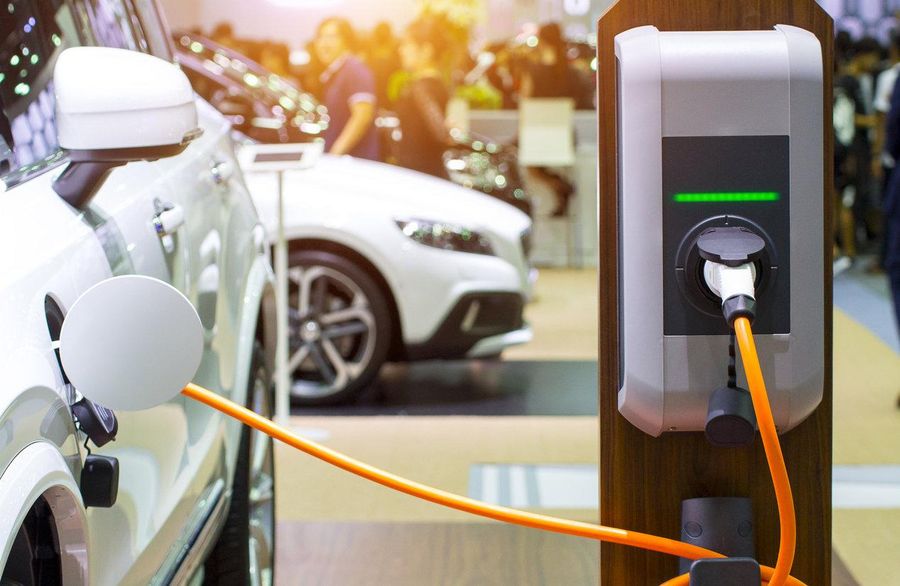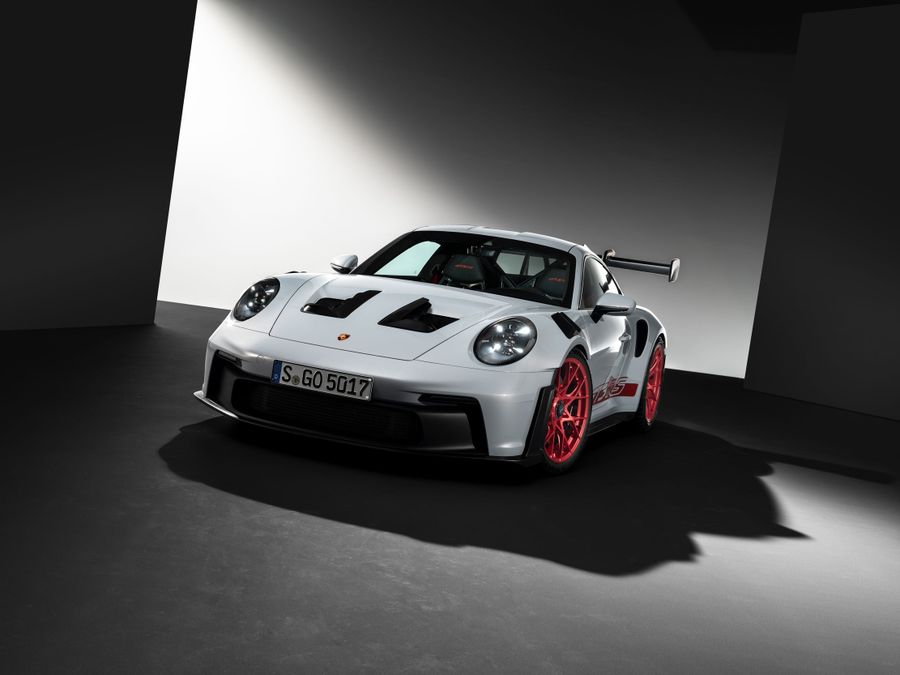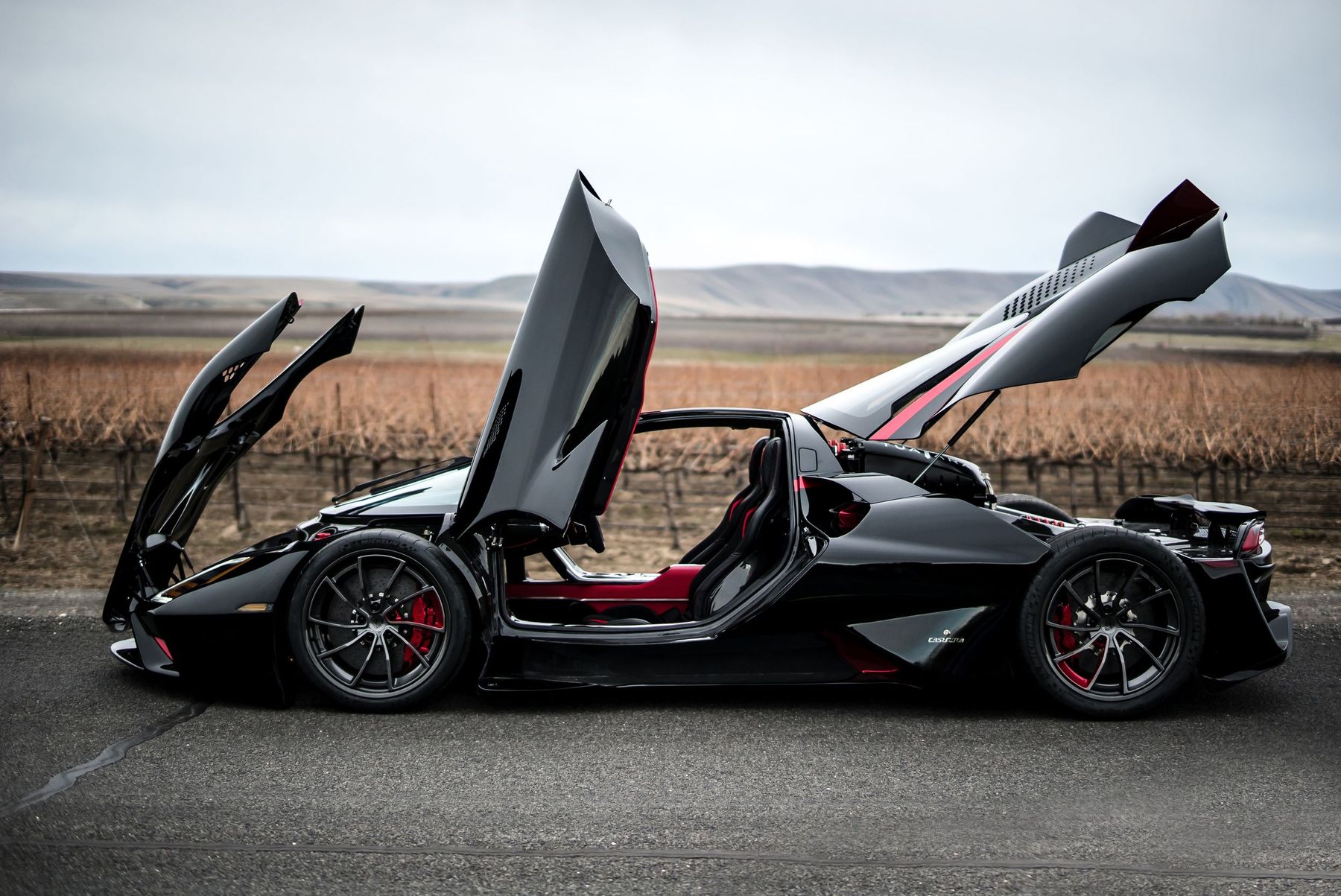
SSC Tuatara Hypercar. Speed record holder

The SSC Tuatara is a mid-engine, rear-wheel drive coupe manufactured by the American company SSC North America. It has been serially produced since 2018. Deliveries of the first commercial vehicles began in 2020. A batch comprises 100 cars. We do not know the price, but judging by the ‘standard’ price lists of such models, potential customers will have to pay at least $2 million for the Tuatara.
You may wonder why we are even talking about the Tuatara, considering the limited quantity and astronomical price. Well, this hypercar turned out to be the fastest production car in the world (today). It is faster than the Bugatti Chiron and Koenigsegg Agera… It managed to accelerate to an incredible 532.93 km/h! The SSC Tuatara showed the highest average speed on the public road. Moreover, for a kilometer, the coupe was able to move at an average speed of 517.16 km/h, and it drove one mile (1.61 km) with a result of 503.92 km/h. The race took place on an 11-kilometer section of the SR 160 highway in the US state of Nevada, which was specially blocked for racing. The car was driven by the professional pilot Oliver Webb.
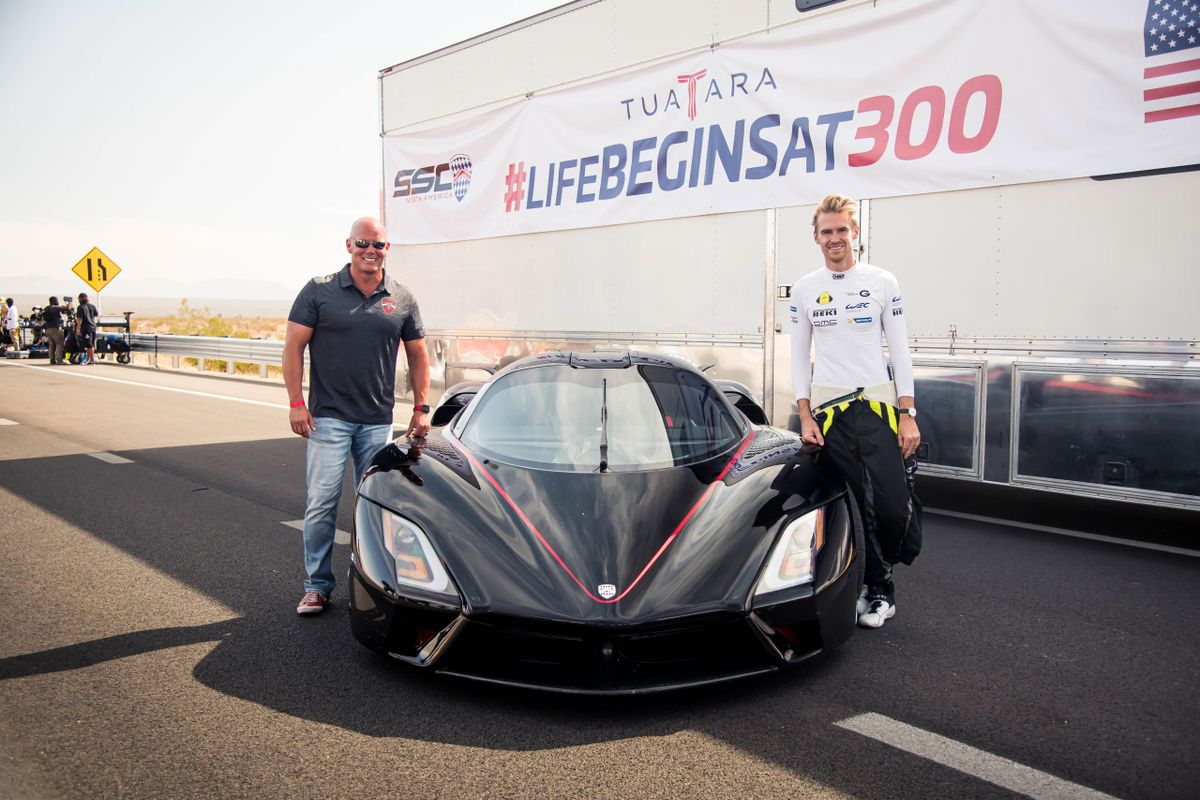
The Bugatti Chiron accelerated to 490.484 km/h and that only in one direction, and the rules demand two back and forth trips. Plus, it was not a completely “production” model, as it was significantly modified for racing. The resulting car featured a modernized chassis, the W16 engine boosted by 100 hp (up to 1,600 hp), and the 25 cm longer body. Another record holder is the Swedish hypercar Koenigsegg Agera RS with a V8 engine with 1,360 hp was able to reach 446.97 km/h. For a kilometer, the coupe was able to move at a speed of 445.54 km/h. Plus, it drove one mile (1.61 km) with a result of 444.66 km/h.
The maximum speed of the SSC Tuatara was determined based on the results of two races: 484.53 km/h in one direction and 532.93 km/h in the other. The arithmetic mean was 508.73 km/h, which was recorded as a record. According to pilot Oliver Webb, even at a speed of 532 km/h, the hypercar continued to accelerate: the Tuatara reached the last 32 km/h in less than 5 seconds. A strong side wind prevented the improvement of the final result, so the limiting capabilities of the car are not fully known.
Interestingly, the world speed record among production cars was not counted. Once the official video with the Tuatara testing results was released, it turned out that the recording did not correspond to the declared results. But the developers stayed positive and arranged another race at the Johnny Bohmer Proving Grounds test site in Florida. The owner of the hypercar, Larry Caplin, managed to accelerate the car to 450.1 km/h when driving in the north direction and up to 460.4 km/h in the south direction. So the SSC Tuatara regained its record holder status: the average speed according to the results of the tests was 455.3 km/h, the highest instantaneous speed was 460.4 km/h. This time, the speed was monitored by special devices developed by Racelogic, Life Racing, Garmin and the international association IMRA, so the probability of a repeated mistake was almost zero. Most likely, this is not the last attempt by SSC North America to leave its name in history, because the driver could not reach the maximum capabilities of the car due to the relatively small length of the training ground (3.7 km).
What do we know about SSC?

Back in 2007, the little-known American company Shelby Super Cars instantly caused a global sensation: its Ultimate Aero TT coupe broke the official speed record for production cars: 412.28 km/h. After that, the Americans from the town of West Richland, Washington, renamed the company SSC North America in order to avoid patent disputes with Carroll Shelby’s company: SSC founder Jerod Shelby is just his namesake. And in 2011, the company introduced a new future record holder, the SSC Tuatara coupe prototype. The first production cars reached buyers in 2020. The company has even built a new modern production facility for the serial production of the Tuatara.
History of the fastest hypercar
It is also important that the new record holder, the SSC Tuatara, is a full-fledged production car. For the first time, its prototype was presented back in 2011. The car, named after the New Zealand lizard, appeared in public only once, in 2014 at the Pebble Beach Elegance Contest. It was again an experimental coupe. And only in 2018 it was announced that the Tuatara would go into mass production. Moreover, the production car looked almost the same as its predecessor. The hypercar featured a slightly redesigned rear end and interior. Apparently, the original version of the famous designer Jason Castriota, who designed all the cars for SSC, turned out to be very successful.
The Tuatara is made almost entirely of carbon fiber, weighs only 1,247 kg and has a very low drag coefficient of 0.279. For comparison, the Koenigsegg Agera RS offers 0.33, and the Bugatti Chiron has a drag coefficient of 0.38.
The SSC Tuatara has a top speed of over 500 km/h and an engine output of 1,369 hp when working on regular gasoline and 1,774 hp when working on racing fuel E85!
The rear-wheel drive coupe is equipped with a 5.9-liter V8 engine with a bi-turbocharger and a ‘flat’ crankshaft. It was developed by SSC North America itself in collaboration with Nelson Racing Engines. The engine is paired with a 7-speed automatic transmission. It produces 1369 hp when working on regular gasoline and 1,774 hp when working on racing fuel E85. The torque is sent to the rear wheels via a 7-speed robotic gearbox, which the company calls ‘computerized’. Initially, when developing a hypercar, engineers claimed that they expected that the speed would be limited to 482.8 km/h, but the result exceeded their expectations in the end.
SSC North America did not stop there and prepared two new versions of the Tuatara. This time, the focus was not on top speed, but on handling. Therefore, the streamlining of the car had to be sacrificed for the sake of increasing downforce, and the smooth and balanced body of the hypercar acquired a developed aerodynamic body kit. The new options were created with the participation of Jason Kastriota, who designed the base model.
Versions
SSC Tuatara Striker. The company nicknamed it ‘strike fighter’. The coupe has a large spoiler with a hydraulic angle of attack system, a vertical stabilizer, an advanced diffuser at the rear, a front splitter and other aerodynamic elements. As a result, the downforce has tripled. At a speed of 258 km/h, it reaches approximately 4,900 newtons (or 500 kg), and its distribution along the axes is 45.4% in front and 54.6% in the rear. SSC promises that these developments will be used for the next generation hypercar. The powertrain of the SSC Tuatara Striker coupe is the same as that of the entry-level model. A batch comprises 100 cars.
SSC Tuatara Aggressor. It is not available yet. This is an even more aggressive version of the original hypercar designed only for tracks and not for public roads. The model is distinguished by a lightweight cabin with simple carbon fiber trim, a roll cage and racing seats with five-point harnesses. Moreover, there is another exhaust system, and for an extra charge, the power of the biturbo engine can be increased to 2,200 hp. The batch will comprise only 10 pieces.

